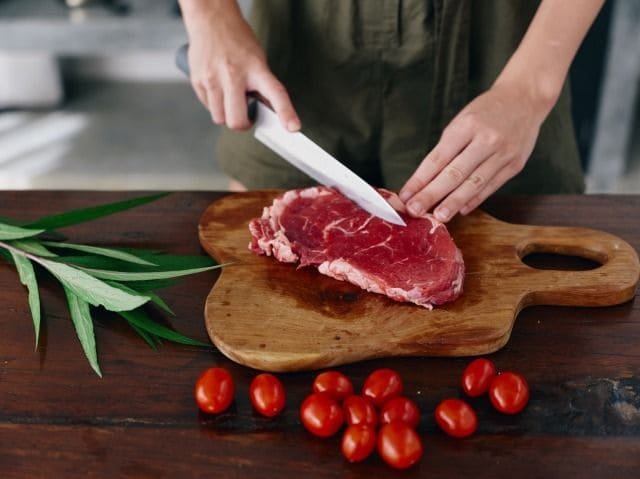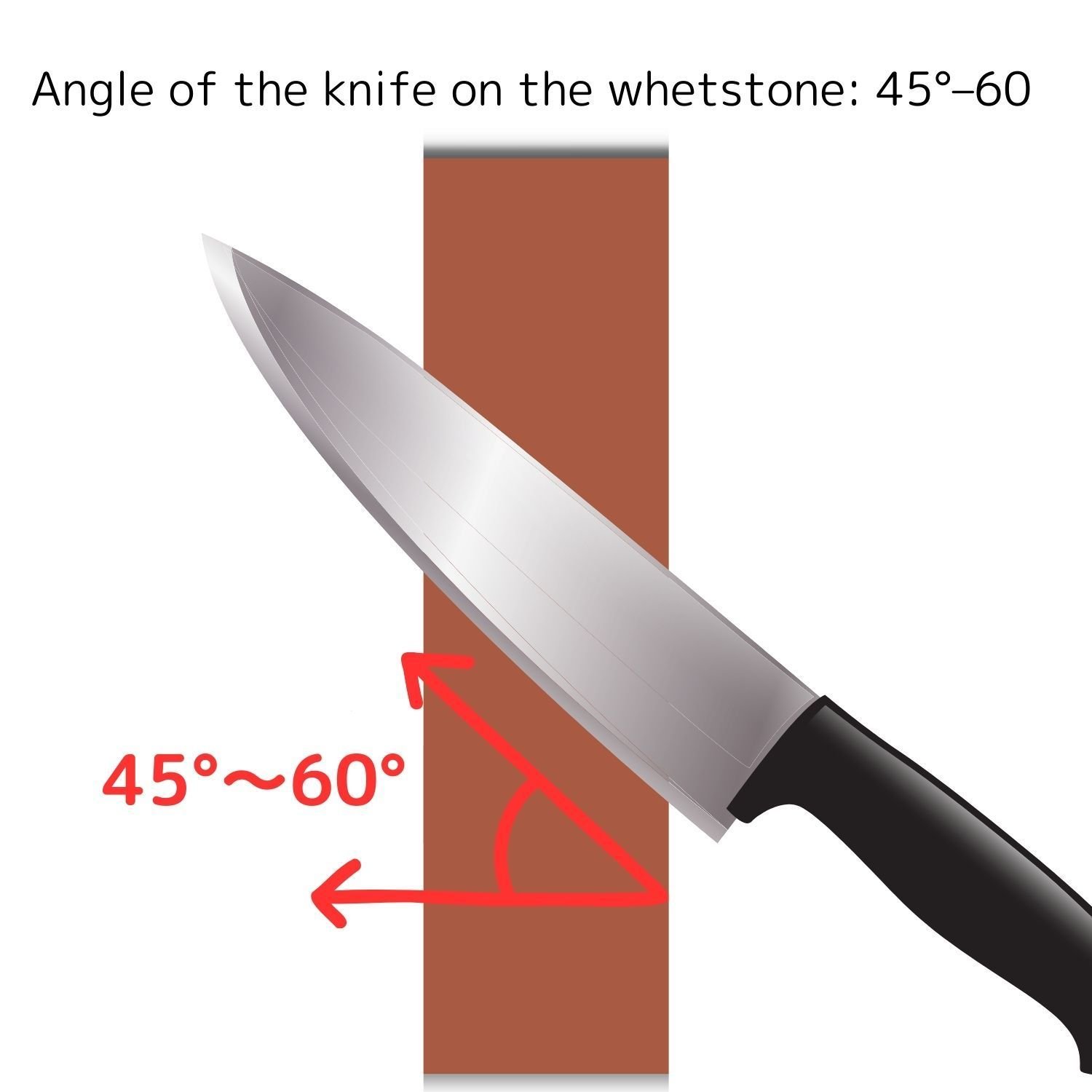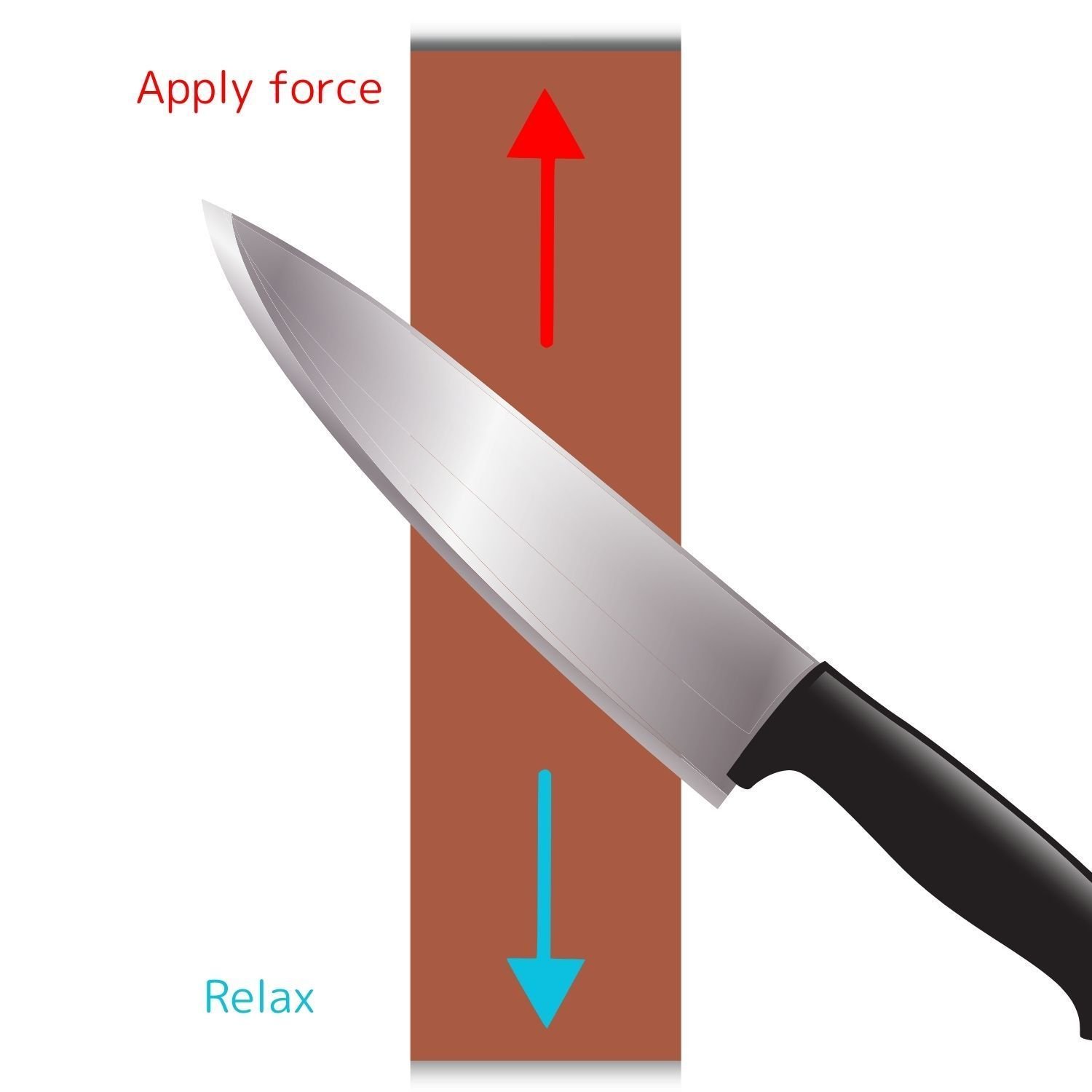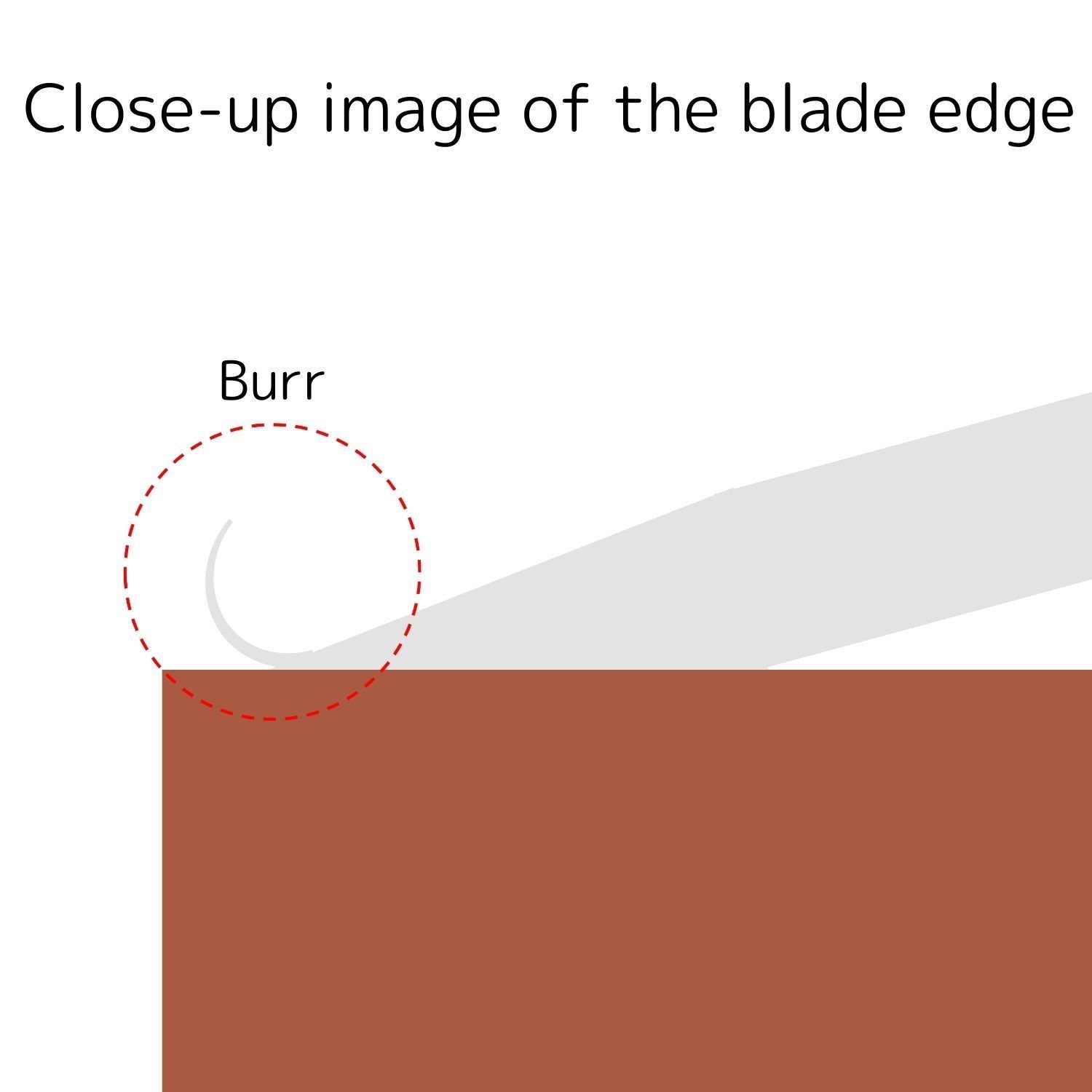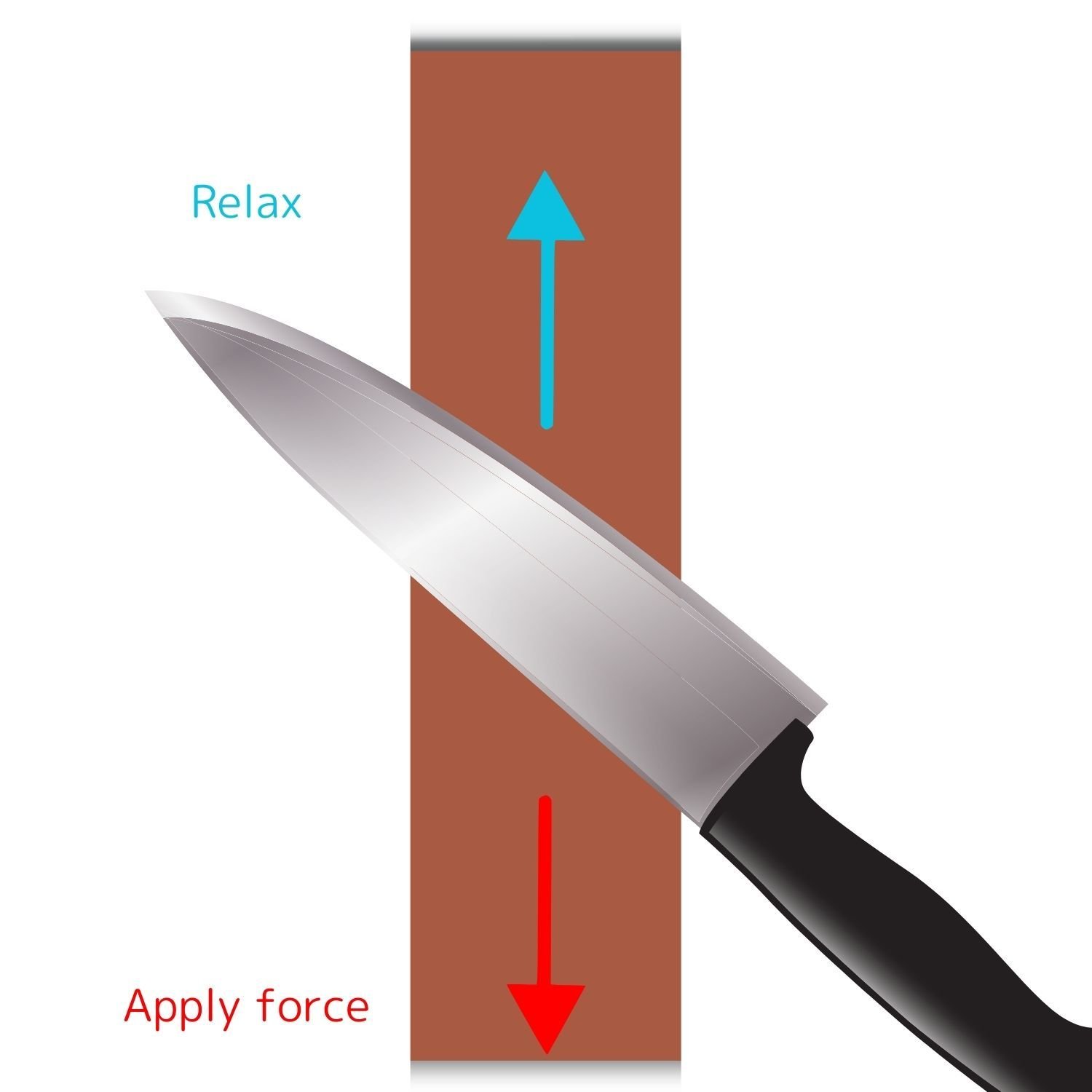Here in New Zealand, sharpening knives with a honing rod may be the more common method. However, in Japan, using a sharpening stone is the standard practice, with chefs sharpening their steel knives daily with a stone, and it’s also common for households to use sharpening stones for stainless steel knives.
Many people may still be unfamiliar with how to use a whetstone to sharpen a knife. Therefore, in this post, we would like to briefly explain the method.
Types of Whetstones and How to Choose Them
The most commonly used whetstones for knives are artificial whetstones. These are made by binding abrasive materials with a binder and firing them, providing stable grinding power at an affordable price. While natural stones and ceramic whetstones also exist, they are generally not as commonly used due to their high cost.
Typically, the grit number is marked on the whetstone package, indicating the size of its particles. The smaller the number, the coarser the grit; the larger the number, the finer the grit. This allows you to choose the right stone for different sharpening needs.
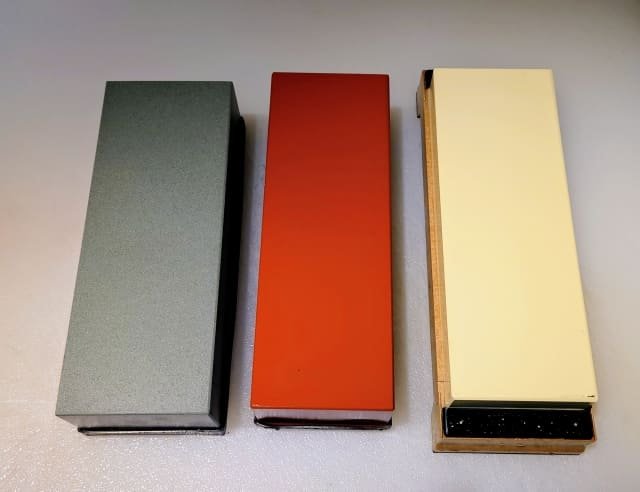
- Coarse whetstones (grit 120-600): Used when the blade is chipped or very dull.
- Medium whetstones (grit 800-2000): Used when the blade’s sharpness is reduced. These are sufficient for household use.
- Fine (Finishing) whetstones (grit 3000 and higher): Used to achieve a sharper edge, often preferred by professionals and cooking enthusiasts.
When choosing a whetstone, it’s important to match the stone to the condition and use of your knife. For household knife sharpening, a medium grit whetstone is typically enough, but if you want a finer edge, using a fine whetstone will significantly improve the sharpness.
How to Sharpen Knives with Whetstones
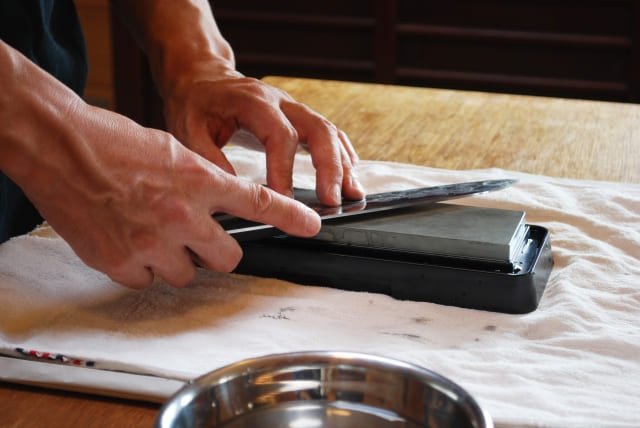
- First, soak the whetstone in water. Soak it until no more bubbles come out, which typically takes about 15 minutes.
(Soaking the whetstone before use is important, as it helps to lubricate the stone and prevents damage to both the stone and the knife) - After that, place the whetstone on a stable surface to prevent it from slipping (you can use a special stone holder or, if you don’t have one, a damp towel).
- Hold the knife in your right hand, placing the blade with the edge facing towards you and the right side (front) down. Maintain an angle of 45–60 degrees with the sharpening stone, using your left index, middle, and ring fingers to press the blade’s tip.
.
- With only the blade touching the sharpening stone, lift the spine of the knife slightly while keeping the blade against the stone. The angle should be about 15 degrees, roughly the thickness of a NZ $1 coin. There are tools available in the market to maintain a 15-degree angle.

- While maintaining the angle of the knife, slide the blade back and forth on the sharpening stone. Sharpen by pushing the blade forward, and when pulling it back, do so lightly. Starting from the tip to the base, divide the blade into several sections and sharpen each section about 20 times. When sharpening a blade, the fine metal powder removed from the steel, along with particles worn off from the sharpening stone, creates a dark-coloured slurry. This slurry aids in smoothing the grinding action, making it easier to sharpen the blade effectively. It’s important not to discard the slurry and to continue sharpening with it. As the slurry dries up, add more water to maintain a smooth and effective sharpening process.

- When the knife is properly sharpened, you can confirm it by the presence of debris and burrs on the edge. If you run your finger along the blade, you will feel a snag. This is the burr.

- For double-edged knives, flip the blade over and sharpen it just like the front side. This time, sharpen by pulling the blade from back to front, and when returning to the back do so lightly without applying much pressure
.
- In the end, remove the remaining burr by gently rubbing it with rolled-up newspaper or a similar material.
- After use, rinse the sharpening stone with water and allow it to air dry naturally. Store it away from direct sunlight.
We learnt from an expert in sharpening stones in Japan and actually did the sharpening ourselves. The video is short, but please take a look.
Tips for Whetstones: Essential Information to Know
How often should a knife be sharpened?
The maintenance of knives depends on the type and usage frequency, but it is generally recommended to sharpen them with a whetstone about once a month.
How to Maintain Your Sharpening Stone Properly
When a sharpening stone is used over time, the center tends to become hollowed out. Sharpening with the stone in this condition can lead to uneven sharpening and cause the blade to lose its shape. Therefore, it is necessary to flatten the stone. You can find flattening stones on the market., and alternatives like concrete or bricks can also be used.
What If a Knife Can’t Be Sharpened with a Whetstone?
Ceramic knives are a type of pottery and are made from a very hard material, so they cannot be sharpened with regular sharpening stones.
Knives That Take a Bit More Effort to Sharpen
The ease or difficulty of sharpening with whetstone depends on the hardness of the knife.
The hardness of a knife is measured by HRC (Rockwell Hardness), with higher numbers indicating a harder material. Generally, for household knives, a hardness range of HRC 56-58 offers a good balance, making it suitable for everyday cooking. For professional use, knives with HRC 60 or higher are often preferred. A knife with high hardness offers excellent sharpness and maintains its edge for a long time, but due to the harder material, it becomes more difficult to sharpen with a whetstone. However, because it wears down less quickly, it doesn’t need to be sharpened as often. In general, high-hardness knives, once sharpened, retain their sharpness for an extended period.
Our Products
Currently, we stock medium-grit and finishing whetstones.

NZ$38.00

NZ$38.00
A knife that is used daily will inevitably lose its sharpness over time. However, by sharpening it at the right intervals, everyday cooking and cutting tasks can become much easier and more efficient.
While sharpening with a whetstone may feel like a bit of a hassle, maintaining the blade once or twice a month can greatly improve its sharpness, making the effort worthwhile. Proper maintenance of your knife is an important step in making your cooking more enjoyable.
By taking good care of your knives and keeping their edges sharp, handling ingredients will become smoother. This, in turn, will elevate the quality of your cooking and make the process more enjoyable.
